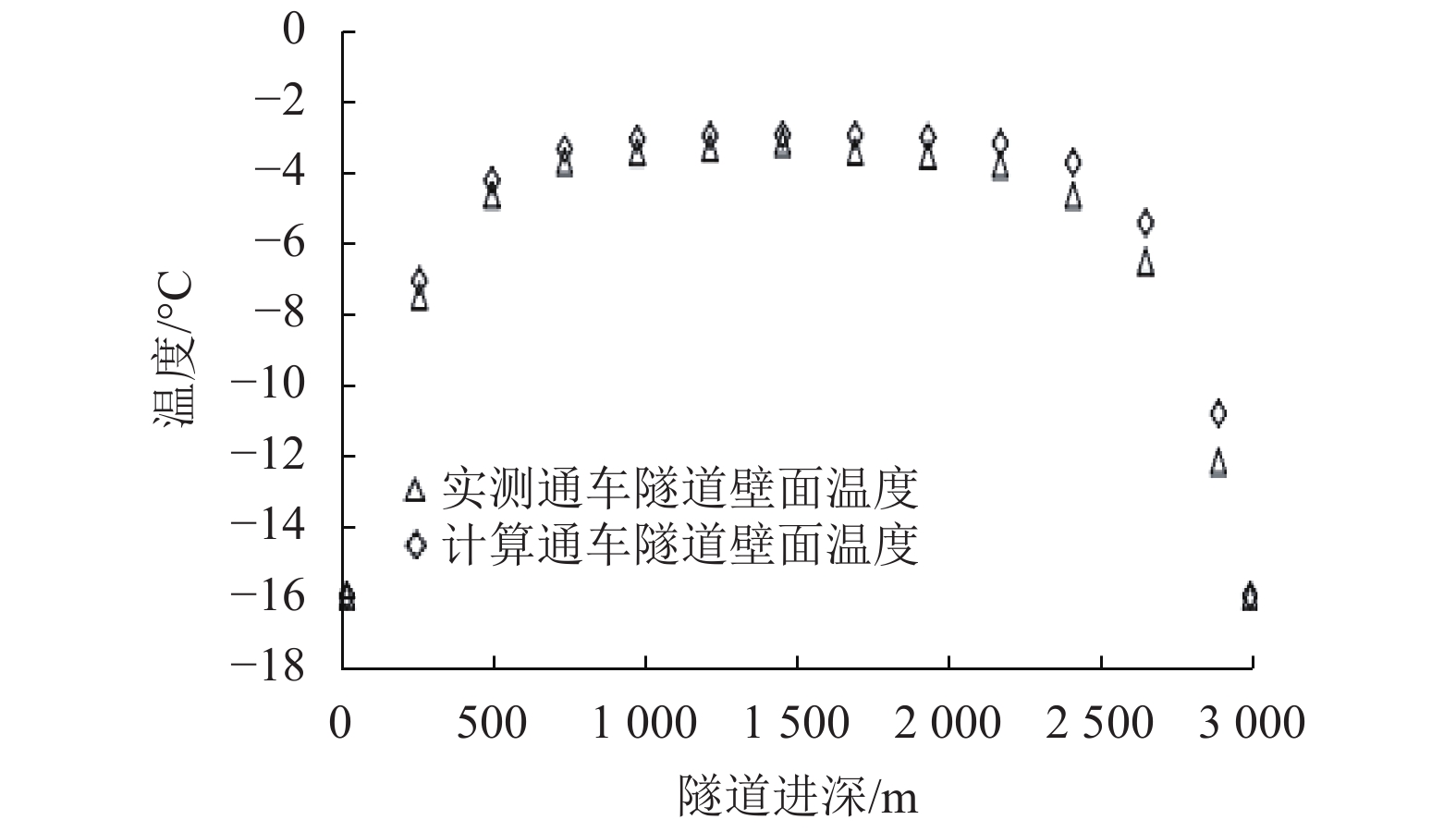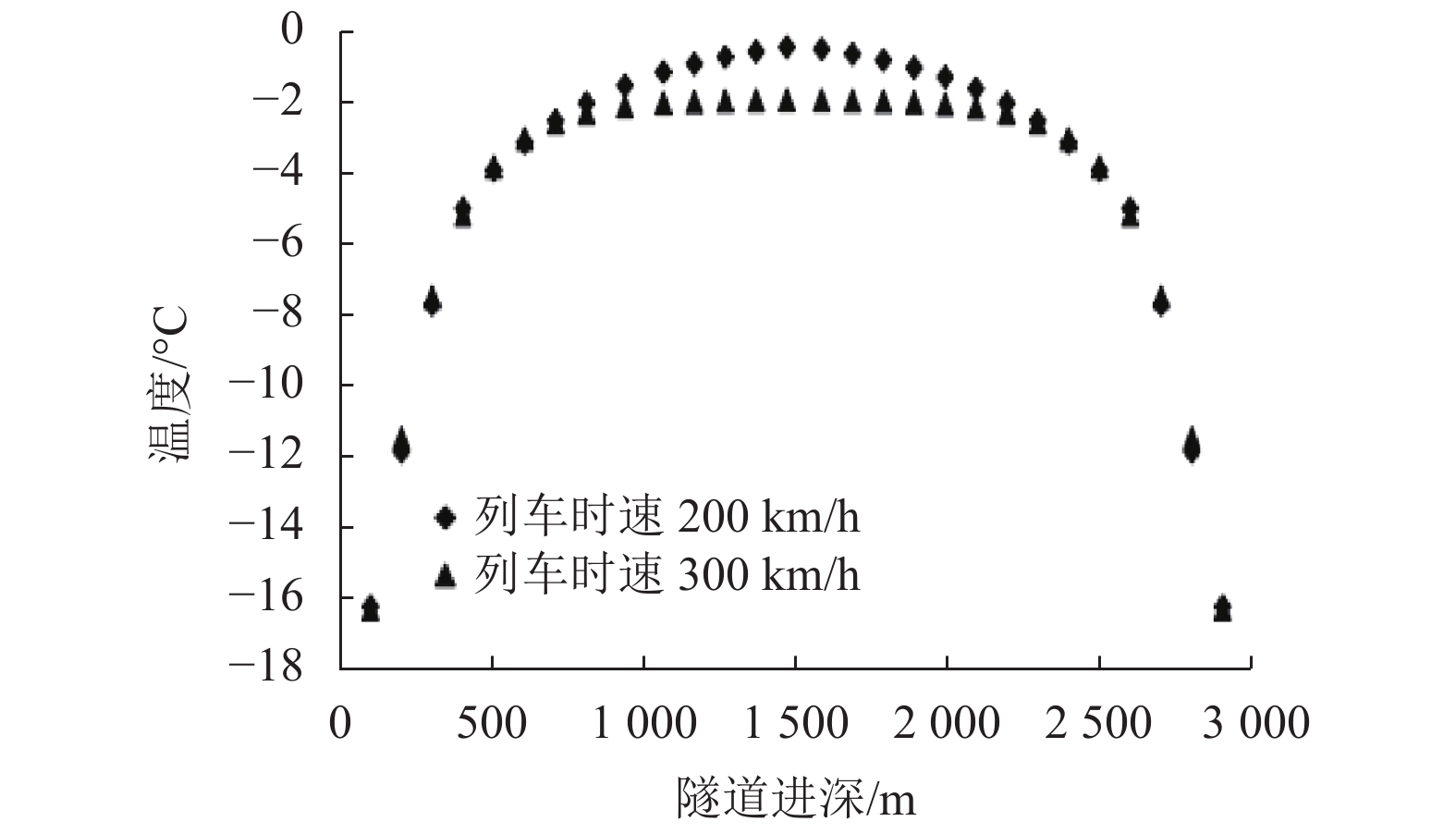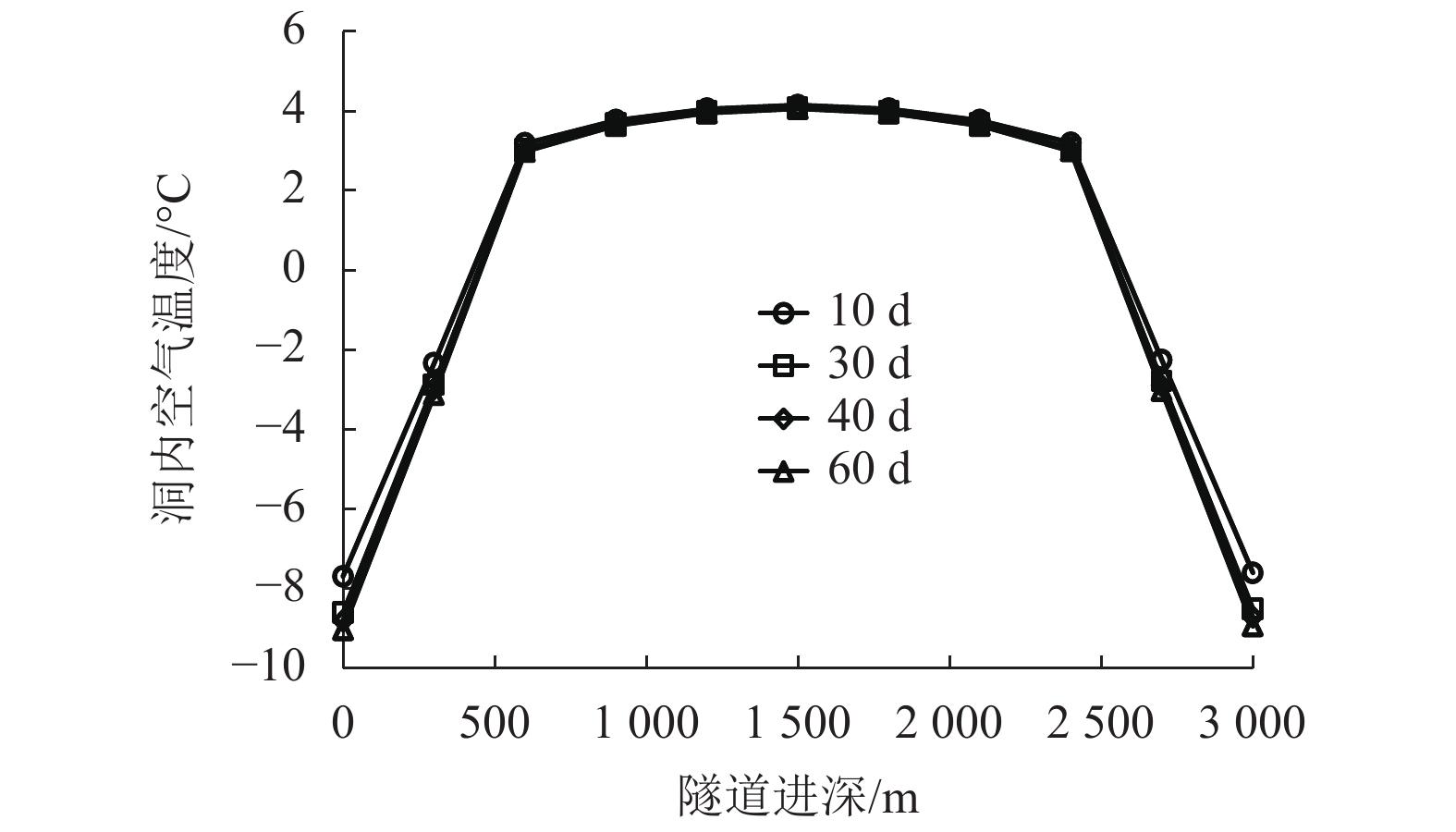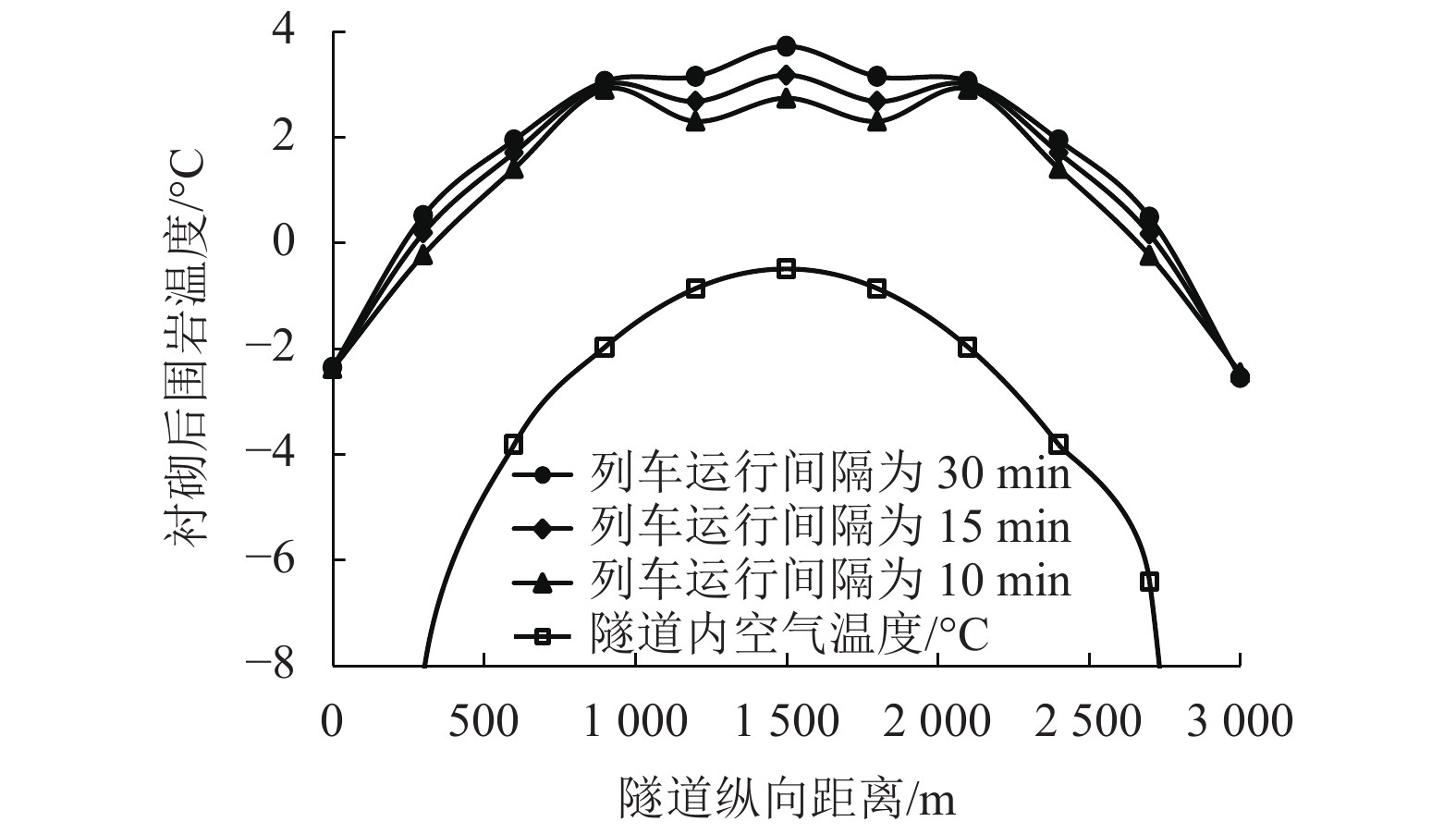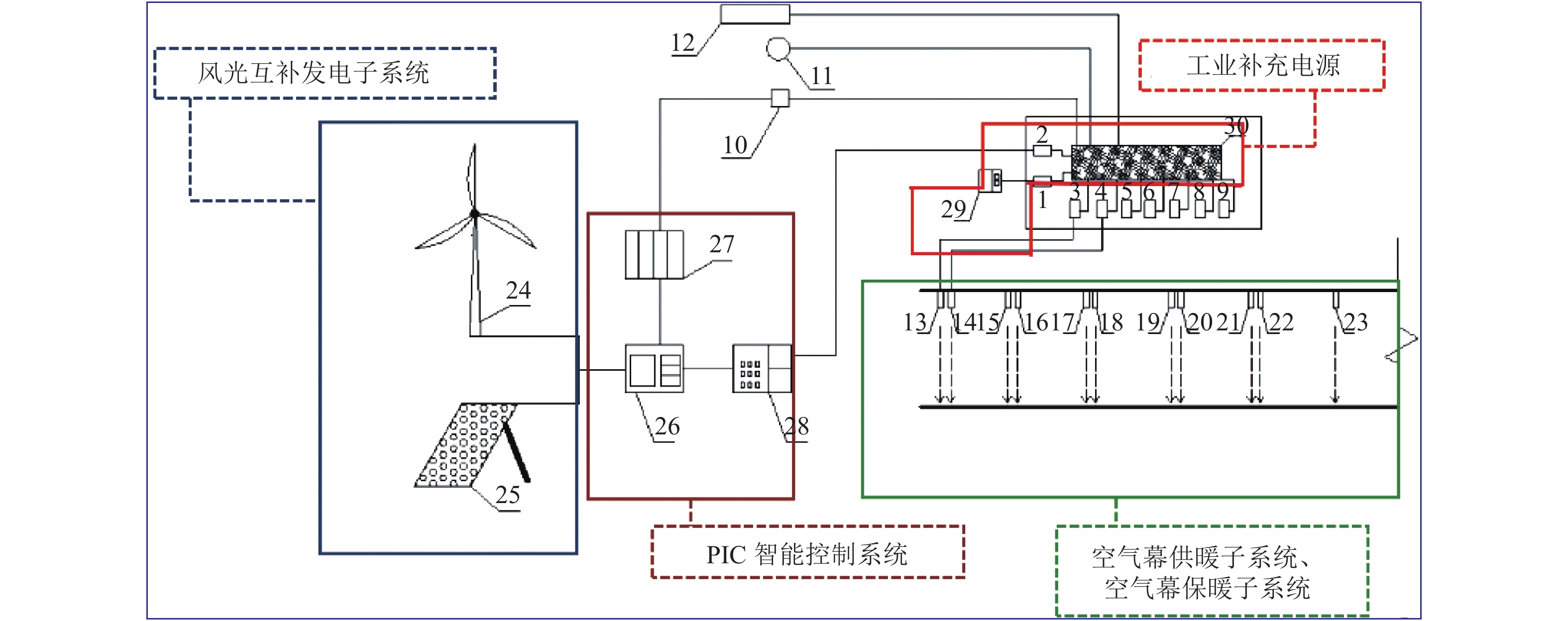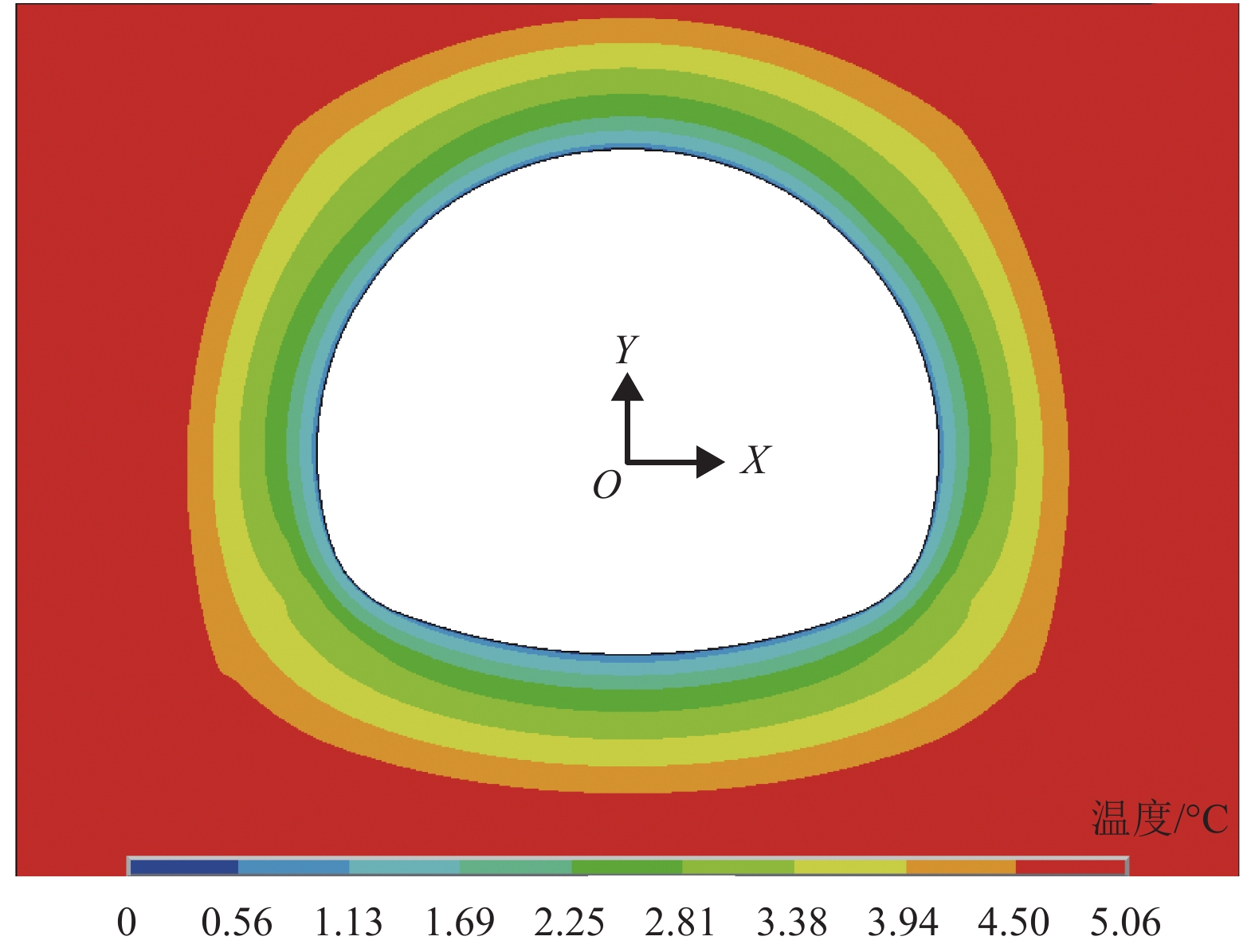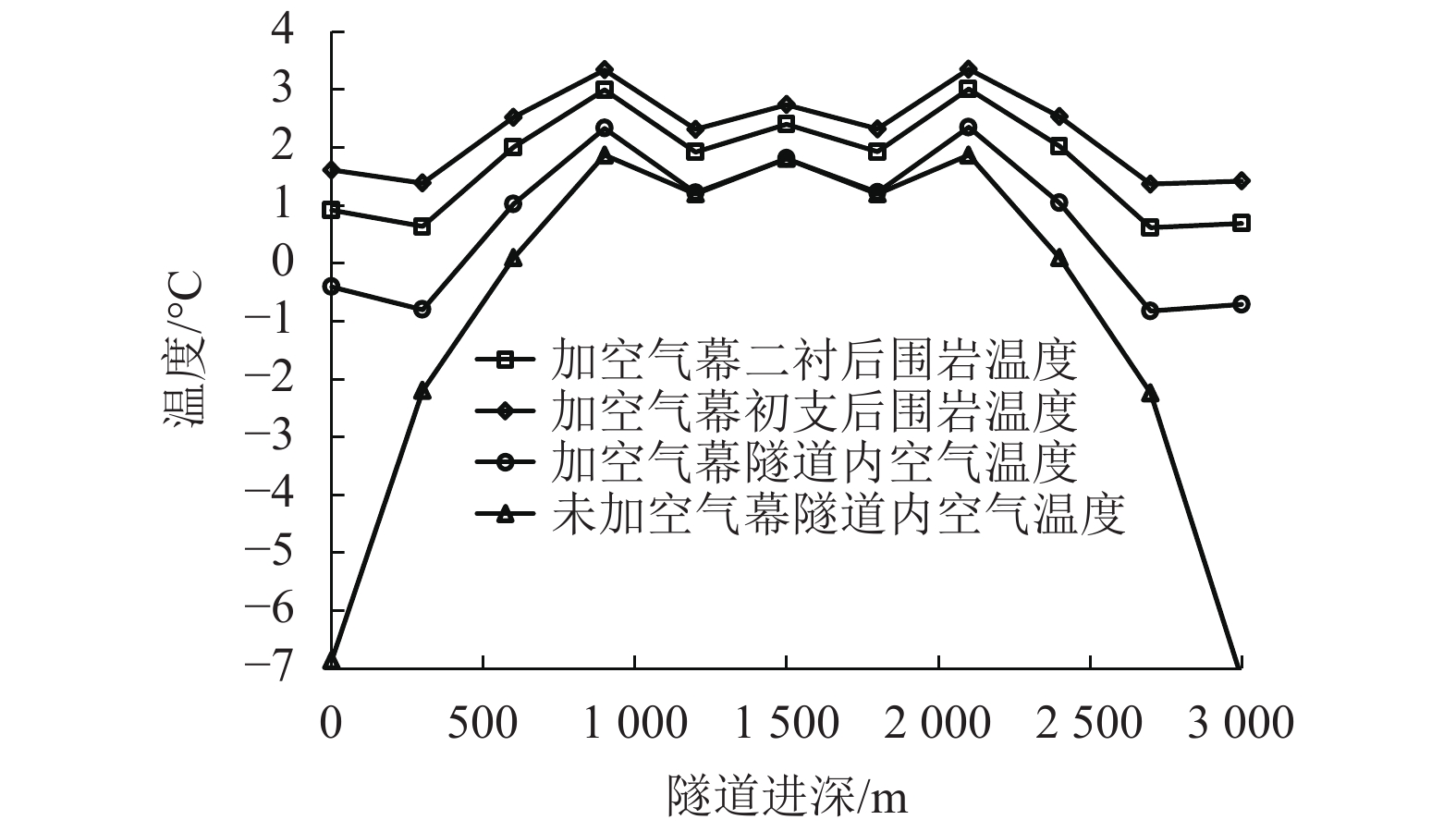Temperature Field Law in Cold Region Tunnels and Insulation Effect of Air Curtain
-
摘要: 隧道洞口段铺设保温层不能完全解决寒区隧道的冻害问题,为此提出一种新型寒区隧道空气幕保温系统,采用叠加原理、分离变量法和贝塞尔特征函数建立列车风影响下寒区隧道温度场计算模型,研究不同列车运行速度和运行间隔时寒区隧道温度场的分布规律,验证了新型寒区隧道空气幕保温系统保温效果. 研究结果表明:当外界气温为 −30 ℃,围岩地温为5 ℃时,隧道洞口段铺设保温层已无法满足寒区隧道保温需求,应与主动保温措施联合;寒区长大隧道结构防寒不应仅在洞口段,若列车运行速度大(大于200 km/h)、列车运行频率高(间隔小于30 min),寒区长大隧道需要全隧道防寒;50 m的保温空气幕联合1 050 m的保温层可以满足外界气温为 −30 ℃、围岩地温为5 ℃、列车运行速度为300 km/h、列车运行间隔为10 min这种极端情况下寒区隧道的保温需求.Abstract: Only laying thermal insulation layer in the tunnel portal section can not completely solve the frost damage problem in cold regions. Therefore, a new air curtain insulation system for cold region tunnels is proposed, a calculation model for temperature field in cold region tunnels subjected to train wind was employed by approaches including superposition principle, separation variable method, and Bessel characteristic function, the distribution law of temperature field in cold region tunnels with different train running speeds and running intervals was studied, the thermal insulation effect of the new air curtain insulation system in cold region tunnels was verified. Only laying thermal insulation layer in the tunnel portal section cannot satisfy the insulation demand for tunnels in cold regions when the ambient temperature is −30 ℃ and the temperature of surrounding rock is 5 ℃, the active thermal insulation measures should be implemented. If the train running speed is more than 200 km/h and the train operation interval is less than 30 min, the whole tunnels need to prevent cold and heat preservation. Finally, it is proved that 50 m air curtain combined with 1050 m insulation layer can meet the thermal insulation requirement of tunnels in cold regions under extreme conditions.
-
Key words:
- train wind /
- tunnel in cold region /
- temperature field /
- air curtain /
- thermal insulation effect
-
表 1 热力学计算参数
Table 1. thermodynamic calculation parameters
材料 密度/
(kg•m−3)热传导系数/
(W•m−1•℃−1)比热/
(kJ•kg−1•℃−1)钢筋混凝土 2 400 1.57 0.85 围岩 2 056 1.18 1.05 聚氨酯 56 0.03 1852 表 2 对流换热系数
Table 2. Convective heat transfer coefficient
速度/(m•s−1) λ/(×10−2W•(m•K)−1) h/(W·(m2•K)−1) 15.0 (列车) 2.3 23.38 5.0 (余风) 2.3 9.71 1.5.0 (自然风) 2.3 3.71 表 3 气流阻隔效率
Table 3. Barrier efficient of airflow
自然风速/(m•s−1) 1.0 1.5 2.0 3.0 4.0 5.0 $\eta $ 0.89 0.79 0.69 0.46 0.29 0.19 表 4 不同列车运行间隔计算工况
Table 4. Computation cases with different train running intervals
项目 工况1 工况2 工况3 运行时间间隔/min 10 20 30 列车运行速度/(m•s−1) 83 83 83 列车通过时间/s 36 36 36 隧道壁面列车风风速/(m•s−1) 15 15 15 余风风速/(m•s−1) 4 4 4 余风作用时间/s 90 90 90 自然风风速/(m•s−1) 0.32 0.32 0.32 自然风作用时间/s 474 1 074 1 674 -
BONACINA C, COMINI G, FASANO A, et al. Nu-merical solution of phase-change problems[J]. International Journal of Heat and Mass Transfer, 1973, 16(6): 1852-1882. COMINI C, DEL GUIDICE S, LEWIS R W, et al. Finite element solution of nonlinear heat conducti-on problems with special reference to phase change[J]. International Journal for Numerical Methods in Engineering, 1974, 8(6): 613-624. HARLAN R L. Analysis of coupled heat-fluid transport in partial frozen soil[J]. Water Resources Research, 1973, 9(5): 1314-1323. doi: 10.1029/WR009i005p01314 赖远明,吴紫汪,朱元林,等. 寒区隧道温度场、渗流场和应力场耦合问题的非线性分析[J]. 岩土工程学报,1999,21(5): 529-533. doi: 10.3321/j.issn:1000-4548.1999.05.001LAI Yuanming, WU Ziwang, ZHU Yuanlin, et al. Nonlinear analyses for the couple problem of temperature seepage and stress fields in cold region tunnels[J]. Chinese Journal of Geotechnical Engineering, 1999, 21(5): 529-533. doi: 10.3321/j.issn:1000-4548.1999.05.001 夏才初,张国柱,肖素光. 考虑衬砌和隔热层的寒区隧道温度场解析解[J]. 岩石力学与工程学报,2010,29(9): 1767-1773.XIA Caichu, ZHANG Guozhu, XIAO Suguang. Analytical solution to temperature fields of tunnel in cold region considering lining and insulation layer[J]. Chinese Journal of Rock Mechanics and Engineering, 2010, 29(9): 1767-1773. 谭贤君,陈卫忠,于洪丹. 考虑通风影响的寒区隧道围岩温度场及防寒保温材料敷设长度研究[J]. 岩石力学与工程学报,2013,32(7): 1400-1409. doi: 10.3969/j.issn.1000-6915.2013.07.015TIAN Xianjun, CHEN Weizhong, YU Hongdan. Study of temperature field of tunnel surrounding rock in cold regions considering effect of ventilation and length design of insulation material[J]. Chinese Journal of Rock Mechanics and Engineering, 2013, 32(7): 1400-1409. doi: 10.3969/j.issn.1000-6915.2013.07.015 卢炜. 寒冷地区高速铁路隧道内温度场变化特性及其影响[J]. 铁道建筑,2014,3(9): 67-70. doi: 10.3969/j.issn.1003-1995.2014.09.19LU Wei. Variation characteristics and influence of temperature field in high speed railway tunnel in cold region[J]. Railway Engineering, 2014, 3(9): 67-70. doi: 10.3969/j.issn.1003-1995.2014.09.19 奥齐西克. 热传导[M]. 俞昌铭译. 北京: 高等教育出版社, 1984: 163-172. 王维,王丽慧. 新建地铁隧道内活塞风温度变化理论分析[J]. 地下空间与工程学报,2014,10(4): 962-967.WANG Wei, WANG Lihui. Theoretical analysis on temperature change of piston wind in the new subway tunnel[J]. Chinese Journal of Underground Space and Engineering, 2014, 10(4): 962-967. 张耀,何树生,李靖波. 寒区有隔热层的圆形隧道温度场解析解[J]. 冰川冻土,2009,31(1): 114-118.ZHANG Yao, HE Shusheng, LI Jingbo. Analytic solutions for the temperature fields of a circular tunnel with insulation layer in cold region[J]. Journal of Glaciology and Geocryology, 2009, 31(1): 114-118. 沈翔. 地下铁道活塞风特性的研究[D]. 上海: 同济大学, 2004. 王树刚,江亿,朱颍心. 北京地铁列车活塞风的实测与分析[J]. 暖通空调,1998,28(5): 47-49.WANG Shugang, JIANG Yi, ZHU Yinxin. Field test and analysis of piston action ventilation in Beijing underground railway system[J]. Heating Ventilating & Air Conditioning, 1998, 28(5): 47-49. 中铁二院工程集团有限责任公司. 铁路隧道运营通风设计规范: TB10068—2010[S]. 北京: 中国铁道出版社, 2010. 龙垚. 寒区长大隧道温度场的三维分析及保温措施研究[D]. 兰州: 兰州交通大学, 2013. -




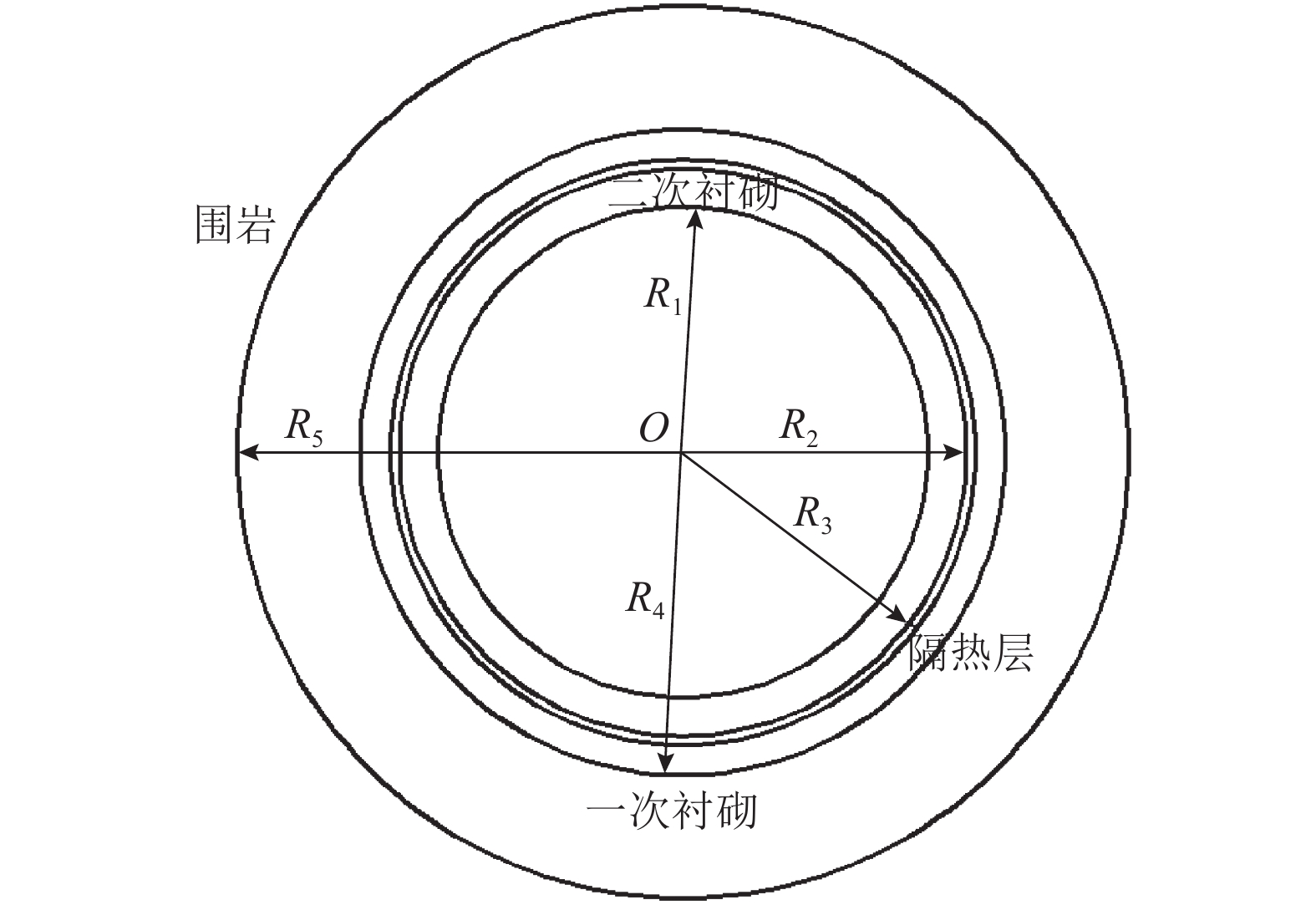
 下载:
下载:
